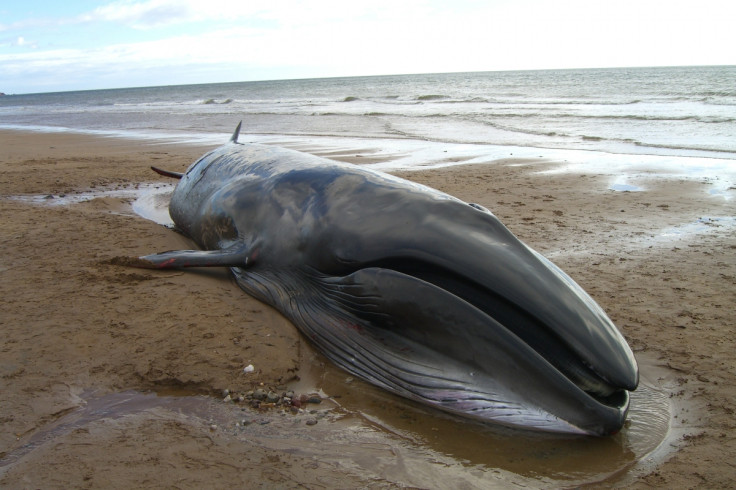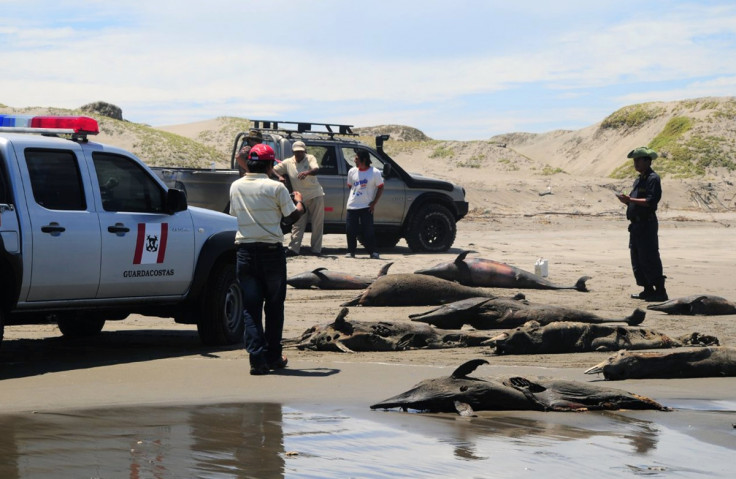Chile whale stranding: 337 sei whales found dead off Patagonia 'beyond the ordinary'

Scientists in Chile have discovered what they believe to be the biggest ever whale stranding, with 337 carcases discovered off Patagonia. They were found by a team from the Universidad de Chile and Consejo de Monumentos Nacionales in Santiago through aerial and satellite photographs – in total they saw 305 bodies and 32 skeletons in an area between the Gulf of Penas and Puerto Natales.
The whales were first discovered in June and scientists were waiting to announce the find in a scientific journal but news leaked in Chilean press and was subsequently reported by National Geographic. Because they were found in a remote area, scientists have not been able to examine the whales, so why they died remains a mystery.
Lead scientist Carolina Simon Gutstein said they believe them to be sei whales, an endangered type of baleen whale. They normally inhabits deep offshore waters and migrates from cool water in the summer to temperate waters in the winter. They can grow up to 64ft (19.5m) and weigh 28 tonnes.
David Lusseau, senior lecturer in Marine Top Predator Biology at the University of Aberdeen, told IBTimes UK this does appear to be the largest whale stranding for any type of baleen whales. He said: "I do not know of other events with such large numbers of individuals involved. Seeing multiple sei whales stranded together in clusters is beyond the ordinary."
He also said the actual number of dead whales could be far higher, as it could be that just a proportion of bodies washed ashore. "We have to think about stranding in a different way we think about the 'typical' mass strandings [of dolphins, such as pilot whales, which are often live stranding]," he added.

"These baleen whales have likely been in trouble while offshore and have been floated to the shore either dead or while dying. The whales are unlikely to be aggregated at the shoreline for social reasons. So, these strandings are probably caused by individual whales being exposed to similar circumstances, leading to their death. It is likely also that only a proportion of the dead whales have stranded, so this is an underestimate of the number of whales that have died in a very short event."
The Chilean researchers are planning to visit the area to try to establish what killed the whales and the government has launched an investigation into the deaths. Previously, toxic blooms of microorganisms have been blamed for whale deaths but the team did not speculate on the possible cause.
"It is going to be very hard [to work out the cause of death] because of the lack of access to fresh carcasses," Lusseau said. "This will put constraints on the type of cause of death that can be detected."
Instead, he pointed to a number of other similar events in the wider region that have taken place over recent years. This includes thousands of dead sea birds washing up on beaches in Hualpen in Chile in May, and over 400 dead dolphins washing ashore in northern Peru in January 2014. He said: "Something is going on in that wider region of the Pacific. We cannot know for sure until we get a good veterinary investigation of the carcasses."
The area of the Pacific Ocean was warmer than normal this year, possibly providing one line of investigations, he added. Lusseau concluded: "Also, June is winter in the southern hemisphere, what are all those whales doing so far south when they ought to be in warmer waters? Perhaps this is shedding light on the problem: the Pacific Ocean is a right mess this year, and these climatic problems does have consequences for the animals living there."
© Copyright IBTimes 2025. All rights reserved.






















